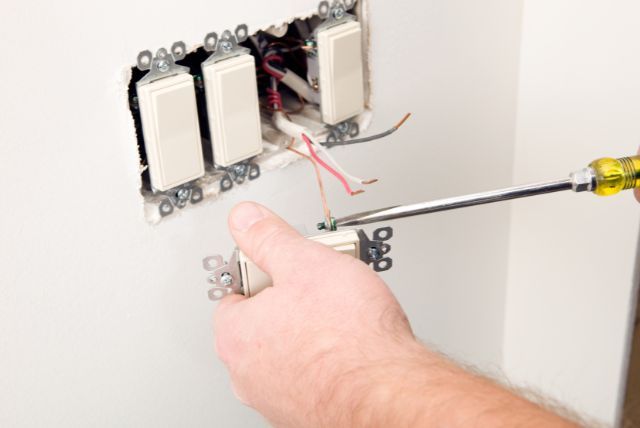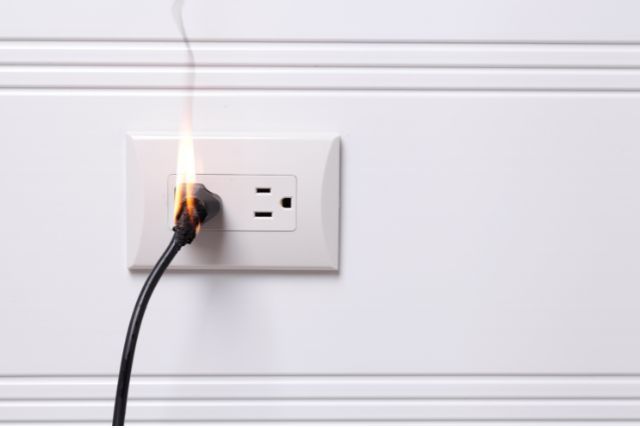The Science Behind Radiation Heating: How It Works and Why It’s Effective

Table of Contents
ToggleTL;DR: Radiation heat transfer is vital for energy exchange, operating on electromagnetic radiation principles without a medium. Radiant heating systems offer efficient alternatives, directly warming objects and people while minimizing heat loss. Factors like system type, insulation, and installation are crucial considerations. The future holds promising advancements driven by technology and demand. Contact Prime Electric for advice or installation.
Radiation heat transfer, a process central to our existence, allows heat from the sun to travel through space and warm our planet. From the sun’s soothing warmth to the technological marvels that harness this power, understanding the science behind radiation heating and transfer is vital and intriguing.
Due to the increasing demand for radiation heating systems, the market is worth $3 billion. As we delve deeper into this topic, you’ll uncover the mechanics of how objects emit and absorb radiant energy, the significance of radiation in everyday life, and the cutting-edge advancements in radiation heating systems.
From the basic principles that govern this phenomenon to its practical applications in various industries, this article aims to provide a comprehensive understanding of radiation heat transfer, explaining radiation, heat transfer, and radiant energy to enhance its visibility and accessibility.
Understanding Radiation Heating
Radiation heat transfer is a fundamental component of energy exchange processes, crucial for both natural phenomena and technological applications. Here’s a deeper dive into understanding this fundamental process:
Core Principles
At the heart of radiation heat transfer is that all objects emit electromagnetic waves if their temperature is above absolute zero. This radiant energy is always in play, from the vastness of space to the intimacy of our homes.
Unlike conduction and convection, radiation does not require a medium to travel. This allows the sun’s rays to warm the Earth despite the cold vacuum of space or the frigid temperatures of the mesosphere, showcasing the power and reach of radiant energy.
Application in Heating Systems
Radiant heating systems, which include underfloor, wall, and ceiling installations, support this principle to provide efficient and comfortable warmth. They’re particularly praised for their efficiency over traditional forced-air systems due to their elimination of duct losses and ability to provide even room-by-room controlled heat.
These systems are favored for their health benefits, reducing allergen and dust circulation, and their compatibility with renewable energy sources, marking them as a sustainable choice for future heating solutions.
Understanding radiation heat transfer enriches one’s appreciation for natural processes and informs the selection and use of heating systems in our living and working environments.
The Science of Radiant Heat Transfer
Radiant heat transfer, a sophisticated form of energy exchange, operates on the principles of electromagnetic radiation. This mechanism is controlled by the thermal motion of particles within matter, allowing heat to be conveyed even without a medium. Here’s a closer look at the science behind radiant heat transfer:
Core Mechanisms
- Emission: Surfaces emit thermal radiation due to the kinetic energy from random movements of atoms and molecules.
- Propagation: Unlike other heat transfer modes, thermal radiation can travel in straight lines at the speed of light, ensuring rapid heat transfer.
- Interaction with Surfaces: When thermal radiation encounters another body, it can be absorbed, reflected, or transmitted based on the surface’s properties, such as temperature and spectral emissivity.
Key Characteristics
- Frequency and Temperature: The frequency of emitted radiation increases with the temperature of the emitting body, illustrating the direct relationship between an object’s thermal state and its radiation characteristics.
- Blackbody Radiation: Idealized as black bodies, certain objects can absorb all incident radiation, reaching maximum thermal radiation emission at given temperatures.
Applications
Understanding and applying the science behind radiation heating is fundamental in various technologies, from enhancing thermal comfort in buildings to improving the efficiency of solar energy systems.
Notably, radiant heating systems offer an energy-efficient alternative to conventional heating methods, enhancing the importance of radiation in modern engineering and environmental sustainability efforts.
By dissecting these aspects, one comprehensively understands how radiant heat transfer functions, highlighting its significance across numerous applications and its role in advancing technology and sustainability.
Types of Radiation Heating Systems
In exploring the realm of radiation heat transfer, it’s crucial to understand the diverse types of radiation heating systems available in the market, each with unique mechanisms and applications.
These systems can be broadly categorized into three types: Air Radiation, Electric Radiation, and Hydraulic Radiation, each contributing distinctively to the radiant heating landscape. Each system has its set of manufacturers, installation methods (wet or dry systems), and ideal applications, making the selection process critical based on individual heating needs and preferences.
Air Radiation Systems
They use heated air as the medium for heat transfer. Despite their operational simplicity, these systems are the least efficient due to air’s low capacity for retaining heat. They are generally not recommended for residential applications due to cost-effectiveness concerns.
Electric Radiation Systems
These systems have electric coils or mats that generate heat when electricity passes through them. Known for their low maintenance and suitability for floor heating, they are especially advantageous in homes with substantial thermal mass or favorable time-of-use electricity rates.
Hydraulic Radiation Systems (Hydronic)
Hydraulic radiation systems are the most popular and cost-effective, particularly in heating-dominated climates. They pump hot water from a boiler through a network of pipes installed beneath the floor, offering superior energy efficiency.
However, they carry a risk of pipe bursts or leaks. Hydronic systems are versatile and capable of being powered by various energy sources, including gas, oil-fired boilers, or solar water heaters, making them a sustainable choice for comprehensive home heating.
Advantages of Radiation Heating
Radiant heating systems offer a significant advantage over traditional forced-air systems in terms of energy efficiency. With these systems, you can gain up to 43% in savings compared to other types. This is primarily due to the unique way radiant systems distribute heat. Here’s a closer look at why radiant heating is generally more energy-efficient:
- Direct Heat Transfer: Unlike forced-air systems that heat the air, radiant heating directly warms up objects and people in a room. This direct heat transfer is more efficient as it minimizes heat loss, ensuring energy is used effectively.
- Reduced Heat Loss: In forced-air systems, ductwork can be a significant source of heat loss due to leakage and lack of insulation. Radiant heating, on the other hand, involves minimal to no ductwork, reducing the potential for heat loss and making it a more energy-efficient option.
- Consistent Temperature: Radiant heating provides a consistent temperature across a space, eliminating the hot and cold spots commonly associated with forced-air systems. This consistency contributes to comfort and means that the system doesn’t have to work as hard to maintain the desired temperature, further enhancing its energy efficiency.
Considerations When Choosing Radiation Heating
When selecting radiation heating for commercial spaces, several critical considerations ensure the system’s efficiency, sustainability, and compatibility with your project requirements. Here’s a breakdown of essential factors:
- System Type and Components: It is essential to choose a control system that can adapt to the building’s design characteristics and thermal inertia.
- Insulation: This factor is vital to the system’s functionality to minimize energy loss.
- Installation Process: It demands meticulous attention to detail and adherence to the correct procedure to prevent issues like pipe bursts in hydraulic systems.
- Energy Shift: High-mass radiant cooling systems’ ability to shift energy input outside of peak hours contributes to operational cost savings and sustainability.
Future of Radiation Heating
The future of radiation heating is poised for significant advancements, driven by technological innovations and increasing demands in both residential and commercial sectors. Here are some key trends and developments to watch:
The Radiant Heating Systems Market is expected to witness substantial growth, fueled by heightened demand across various sectors. Solar panels and collectors exemplify the use of radiation to generate clean, renewable energy, reducing dependence on fossil fuels and mitigating greenhouse gas emissions.
Infrared (IR) technology, used in food manufacturing, showcases the efficiency and environmental benefits of radiation heating, offering increased energy throughput and quality improvement in food processing.
Conclusion
The method of transferring energy through electromagnetic waves is fascinating because it doesn’t require a medium to move; whether through the vacuum of space or the air around us, radiant energy never stops working.
The science behind radiation heating and its developments indicate a promising future for this industry, emphasizing its role in various sectors, environmental sustainability, and energy efficiency. So, if you need further radiation heating advice or professional installation, Prime Electric is always at your disposal!











Leave a Reply